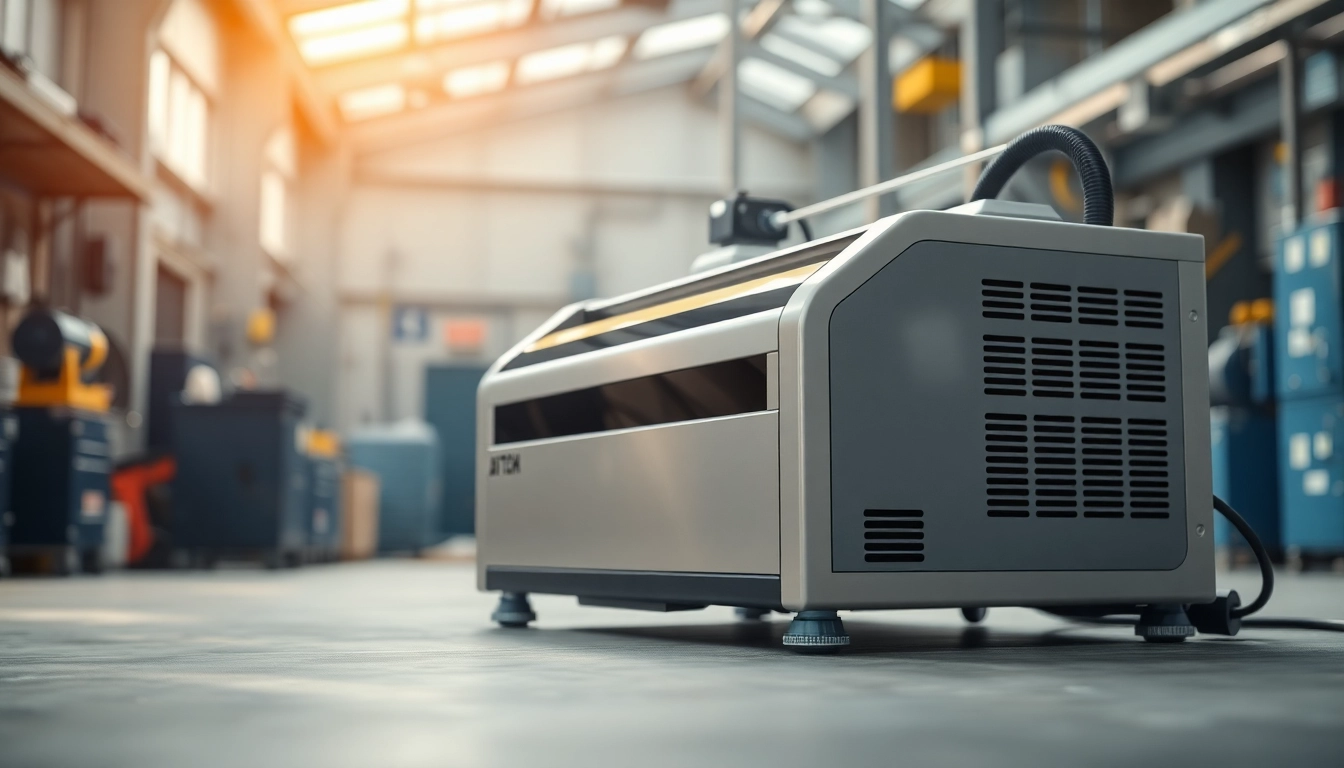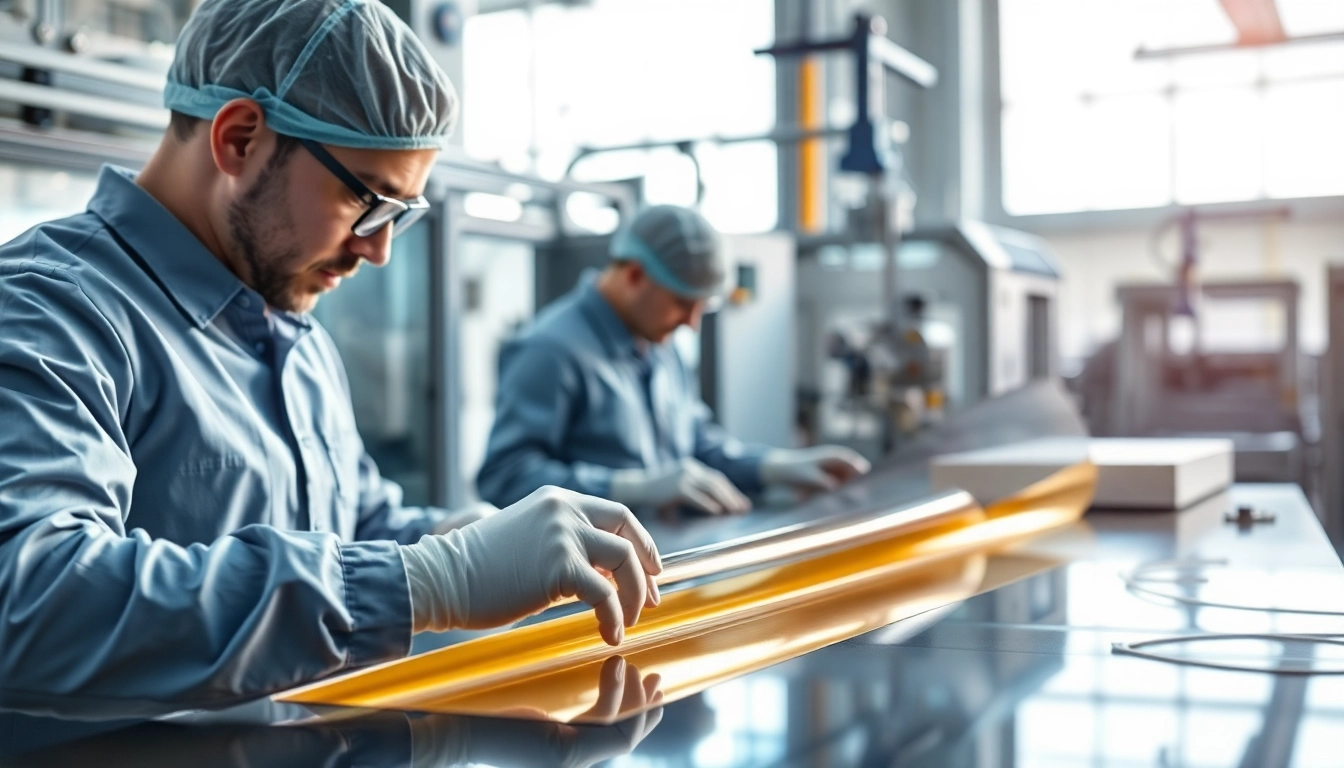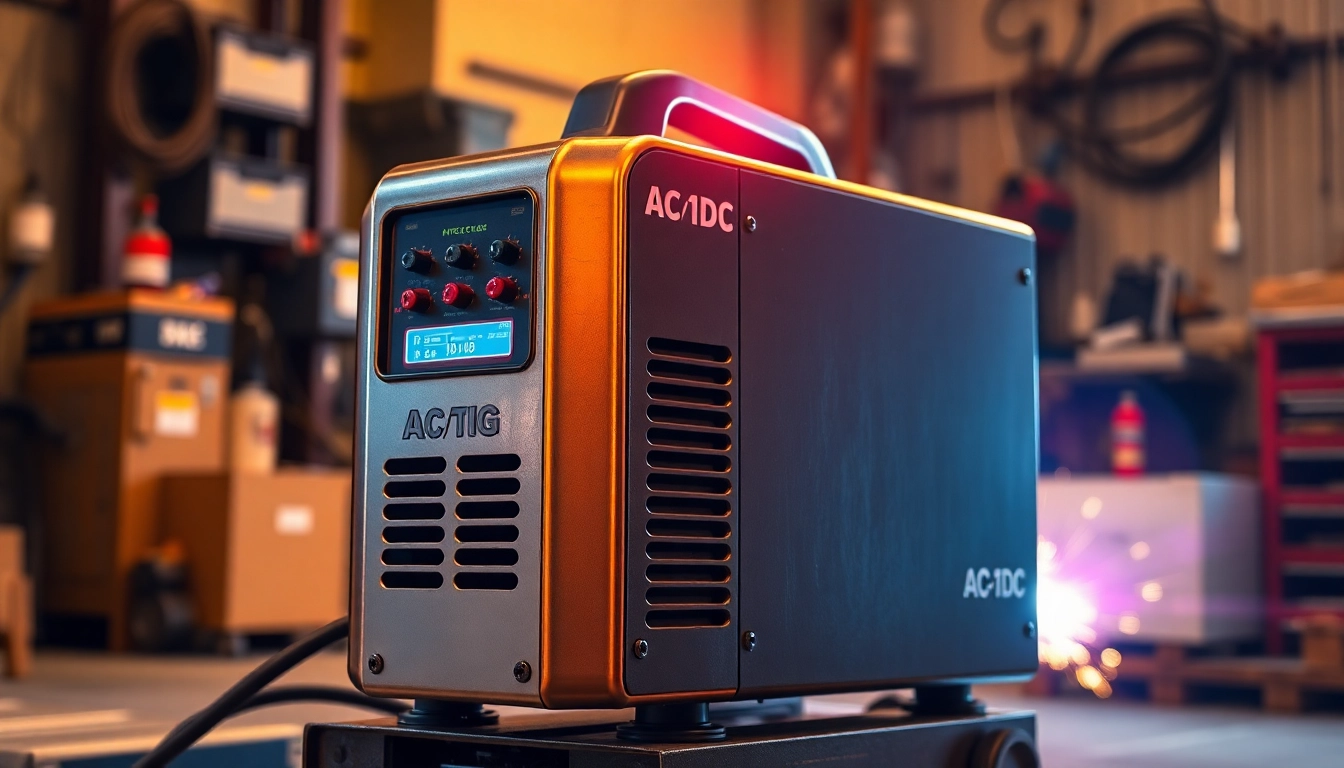Understanding Laser Cleaning Machine Basics
What is a Laser Cleaning Machine?
A laser cleaning machine is an advanced cleaning technology that utilizes high-powered laser beams to remove contaminants, rust, paint, and other unwanted materials from various surfaces. Unlike traditional cleaning methods that rely on chemicals or abrasive materials, laser cleaning is an eco-friendly and non-invasive technique that uses the concentration of light to effectively break down unwanted substances. This technology is gaining traction in multiple industries, from heavy manufacturing to historical restoration, due to its versatility and efficiency.
How Does a Laser Cleaning Machine Work?
The operation of a laser cleaning machine is based on the principle of photothermal and photomechanical effects. When the laser beam is directed at a surface, the energy from the beam is absorbed by the contaminants, causing them to heat up rapidly. This rapid heating can lead to thermal expansion, which can effectively disrupt the molecular bonds holding the contaminants to the underlying material.
Once the contaminants reach a sufficient temperature, they can either evaporate or be blown away by the pressure generated from the laser or by a simultaneous flow of air. Different types of laser waves, such as continuous wave (CW) and pulsed lasers, can be employed depending on the specific cleaning requirements and the type of surface material being treated.
For a practical demonstration, many laser cleaning machines come equipped with adjustable power settings, allowing operators to fine-tune the intensity based on the surface material and level of contamination. The precise nature of laser cleaning makes it an ideal solution for cleaning delicate items like sculptures or intricate machinery without causing damage.
Benefits of Using Laser Cleaning Machine Technology
There are numerous advantages to using a Laser cleaning machine. These include:
- Efficiency: Laser cleaning is a rapid process that can remove contaminants quickly, reducing downtime in industrial settings.
- Eco-Friendly: It doesn’t require chemicals, minimizing environmental impact and enhancing workplace safety.
- Precision: The ability to target specific areas allows for controlled cleaning, protecting underlying materials.
- Versatility: Effective on various materials like metals, plastics, and even delicate surfaces without abrasive damage.
- Cost-Effectiveness: Over time, it can result in cost savings by reducing the need for chemical agents and extensive labor.
Applications of Laser Cleaning Machine
Industrial Uses of Laser Cleaning Machine
In industrial settings, laser cleaning machines are used extensively for maintaining machinery and production equipment. Rust removal from metal parts, oil and grease cleaning from machinery, and surface preparation for welding and coating are some primary applications. Laser cleaning assists in enhancing the lifespan of machinery and ensuring optimal performance by keeping equipment in prime condition.
For example, in the automotive industry, laser cleaning machines are utilized to prepare surfaces for painting or to remove corrosions from vehicle bodies. This technology ensures that the surfaces are free from any contaminants, enabling better adhesion of paints and coatings, which leads to a more durable finish.
Laser Cleaning Machine in Restoration Projects
Restoration projects, especially in architecture and art conservation, have greatly benefited from the adoption of laser cleaning technology. Museums and conservationists use this method to clean artifacts and artwork without risking damage. Traditional methods often involve abrasive cleaning agents that can degrade sensitive materials over time.
Laser systems specifically designed for art restoration allow conservators to remove layers of grime, smoke damage, or previous restoration efforts safely. For instance, cleaning historic buildings’ facades can uncover the original design and enhance aesthetic appeal without altering the inherent material.
Environmental Benefits of Laser Cleaning Machine
The environmental benefits of using laser cleaning technology are significant. By eliminating the need for harsh chemicals and solvents typically used in traditional cleaning methods, laser cleaning machines help reduce chemical waste and pollution. Additionally, laser cleaning minimizes the production of hazardous waste that often results from materials used for abrasive cleaning.
This sustainable approach not only adheres to the growing environmental regulations but also aligns with the goals of many organizations aiming to enhance their green credentials. As industries shift towards sustainable practices, the adoption of advanced technologies like laser cleaning machines will play a crucial role in promoting eco-friendly operations.
Choosing the Right Laser Cleaning Machine for Your Needs
Key Features to Look for in a Laser Cleaning Machine
When considering the purchase of a laser cleaning machine, several key features should be analyzed to ensure that it meets specific cleaning requirements:
- Power Output: Machines come in different power outputs. Higher-power units are suitable for heavy-duty industrial applications, while lower outputs are ideal for more delicate tasks.
- Portability: Depending on the application, a portable unit may be more beneficial, especially for onsite cleaning tasks.
- Control Systems: Advanced machines often come with programmable interfaces, allowing for precise control of laser intensity and duration according to the material being cleaned.
- Cooling Systems: Effective cooling mechanisms ensure that the machine remains within operational temperature limits for longer periods of use.
- Safety Features: Since laser cleaning involves high-intensity beams, machines should include safety features like automatic shut-off, protective housings, and proper warning systems.
Comparing Different Models of Laser Cleaning Machine
When comparing different models of laser cleaning machines, it’s essential to evaluate their specifications and performance metrics. Factors such as cleaning speed, available wavelengths, and the nature of the contaminant should all play a role in the decision-making process.
Many manufacturers provide benchmarks showcasing the efficiency of their systems. It’s advisable to look at customer reviews, case studies, and third-party assessments to gain insights into real-world performance. Additionally, exploring warranty options and customer support can greatly affect post-purchase satisfaction.
Budget Considerations for Laser Cleaning Machine
Budget is often a significant consideration when purchasing a laser cleaning machine. The cost can vary widely based on the machine’s specifications, intended applications, and additional features. When establishing a budget, consider not only the initial investment but also the operating costs, including maintenance, additional consumables, and energy use.
Additionally, consider any potential return on investment. Laser cleaning machines can reduce labor costs and downtime, making them a financially sound investment in many applications. Evaluate the long-term financial benefits against the upfront costs to make an informed decision.
Best Practices for Operating a Laser Cleaning Machine
Safety Precautions When Using Laser Cleaning Machine
Safety is paramount when operating a laser cleaning machine. Operators should wear appropriate personal protective equipment, including safety goggles with proper laser protection ratings, gloves, and protective clothing. It’s also vital to ensure that the workspace is secure, with bystanders kept at a safe distance during operation.
Before beginning work, operators must familiarize themselves with the machine’s manual, ensuring they understand all aspects of its function, operation, and safety features. Implementing a strict protocol for setting up the machinery, conducting risk assessments, and maintaining clear communication among team members will enhance safety.
Maintenance Tips for Your Laser Cleaning Machine
Regular maintenance is essential to keep a laser cleaning machine functioning optimally. This includes routine checks on the laser lens for cleanliness, cooling systems for proper functionality, and electrical components for any signs of wear or damage.
Operators should also adhere to the manufacturer’s guidelines for troubleshooting and repairs. A proactive maintenance schedule, utilizing both scheduled serviced and immediate inspections following intensive use, will extend the machine’s lifespan and ensure consistent performance.
Maximizing Performance of Laser Cleaning Machine
To achieve the best performance from a laser cleaning machine, consider the following strategies:
- Calibration: Ensure that the machine is properly calibrated for the surface and contaminant type being cleaned.
- Training: Invest time in training operators to ensure they understand the full capabilities and functionalities of the machine.
- Documentation: Keep detailed records of operating conditions and results to identify trends and areas for improvement.
- Feedback Loop: Create a feedback system where operators can report on effectiveness and any unexpected issues encountered during cleaning.
Future Trends in Laser Cleaning Machine Technology
Advancements in Laser Cleaning Machine Features
As technology progresses, laser cleaning machines are incorporating more sophisticated features. Emerging trends include improved software integration, allowing for better programmability and optimal control based on specific cleaning tasks.
Additionally, advancements in laser technology, such as the development of more potent and efficient laser sources, will further enhance cleaning capabilities, making the process faster while reducing energy consumption.
Predicted Market Trends for Laser Cleaning Machine
The market for laser cleaning machines is expected to grow significantly as more industries adopt this technology. Increasing environmental regulations and standards will fuel demand, pushing companies to seek sustainable solutions. Furthermore, as awareness of the benefits of laser cleaning increases, more sectors, including the construction, automotive, and heritage conservation industries, are expected to implement this technology.
Innovative Research and Development in Laser Cleaning Machine Applications
Continuous research and development in the field of laser cleaning technology are uncovering new applications. For example, innovations in customizable laser frequencies for better efficacy on specific contaminant types are being explored. Moreover, the combination of laser cleaning with other technologies may lead to hybrid solutions that enhance cleaning outcomes for challenging materials.
As experimentation and investigation into laser cleaning applications continue, industries can anticipate even broader implications and enhancements to current cleaning practices, marking a new era of cleaner and more efficient cleaning technologies.



